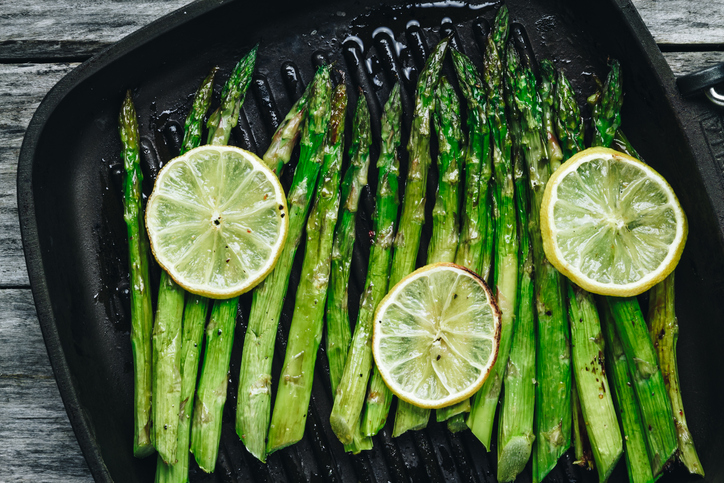It’s Citrus Season and the Squeeze Is On!

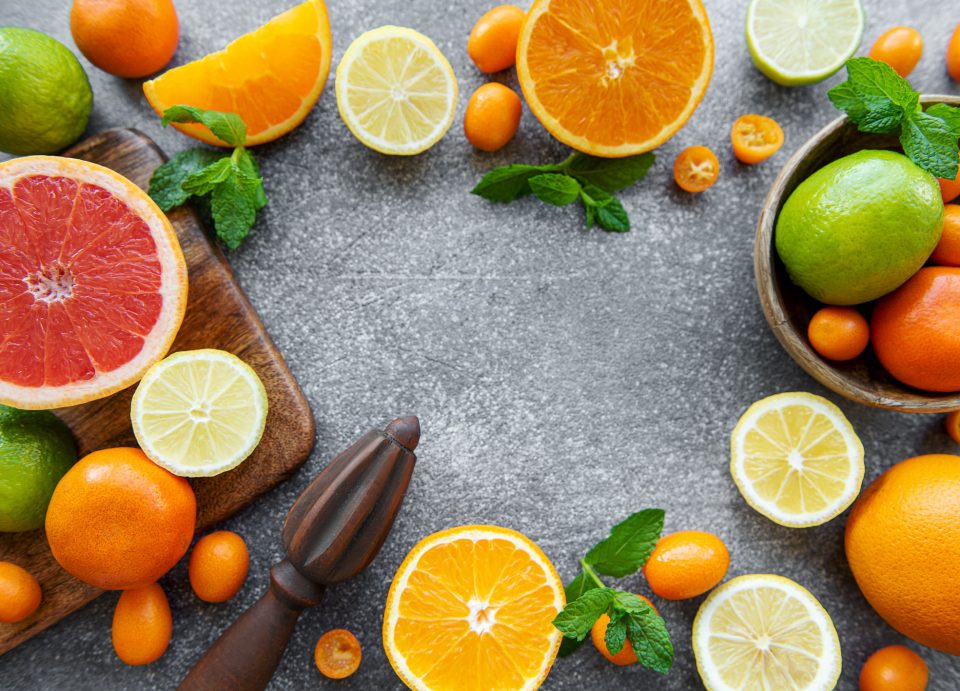
Here in Southern California, just about every yard and neighborhood has citrus trees heavy with fruit. I have a number of fruit trees myself and always marvel at how plentiful and tasty the oranges, lemons and limes are this time of year.
Just about any variety of citrus is at its best in the winter months, but there are some new and unusual varieties that are pretty spectacular. Along with great taste, all citrus are high in vitamins A and C and fiber, while naturally low in calories.
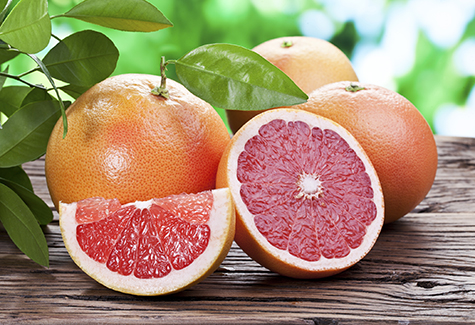 Grapefruit
Grapefruit
Red grapefruit varieties such as Flame, Ruby, Rio Red and Star Ruby not only contain plenty of vitamins A and C, but their bright red color means they contain lycopene, a carotenoid associated with reduced risk of prostate and other cancers. In addition, a Harvard Medical School study states that grapefruit has a low glycemic index of 25, suggesting that it does not significantly affect blood sugar and insulin levels. The combination of fiber, potassium, lycopene, vitamin C and choline in grapefruit all helps to maintain a healthy heart. According to Dr. Jonny Bowden in his book, The 150 Healthiest Foods on Earth, researchers in Israel found that in a study of 57 post-op bypass patients, those given red Jaffa grapefruit as opposed to white grapefruit or none at all had lower triglycerides. Their LDL (bad) cholesterol was lowered by 20%, which is interesting, because the subjects had previously failed to benefit from cholesterol-lowering drugs.
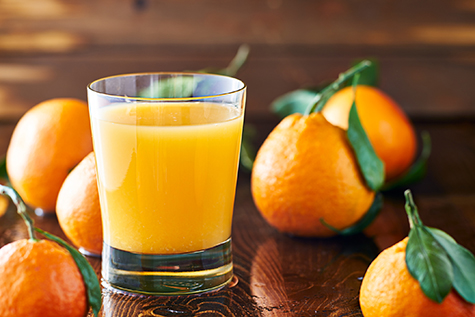 Oranges
Oranges
The vitamin C in oranges of all varieties helps maintain the health of cells. Oranges also contain cancer-inhibiting limonoids, which are associated with therapeutic uses as antivirals, antifungals and antibacterials. Oranges contain hesperidin, which strengthens capillaries and blood vessels. The potassium and fiber in oranges help to lower blood pressure. Try orange zest in baked goods and on roast chicken—the pith and skin are full of limonoids. Try deep red, slightly raspberry-tasting blood oranges. The dark color means they have high levels of lycopene. Cara Cara oranges have beautiful pink flesh and deliver 150% of the RDA for vitamin C, which is good for skin, joints and fighting infection. The significant amount of vitamin A in Cara Caras also helps protect vision. I add orange juice to one of my favorite dessert recipes, Banana Citrus Cake and
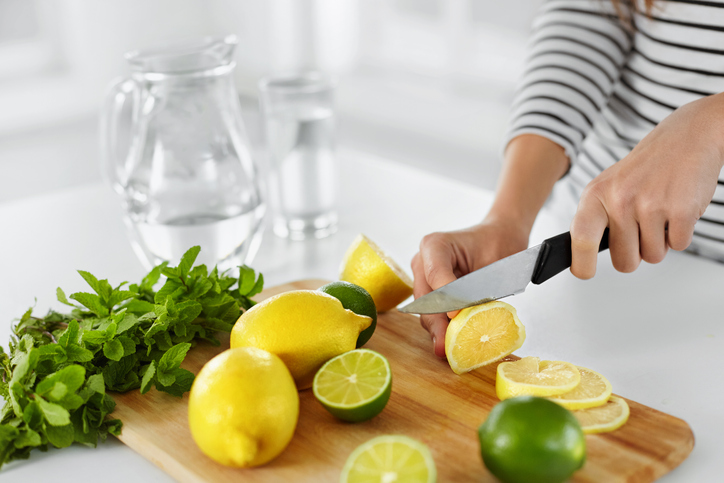 Lemons/Limes
Lemons/Limes
There are two main types of lemons—acidic and sweet. The acidic Eureka and Lisbons are the type that most people are familiar with, but the sweet lemons found in some Mideastern markets add a bright fresh flavor to most any dish. Lemons have been used for medicinal as well as culinary purposes for thousands of years. They’re full of anti-inflammatory, antioxidant vitamin C. Early explorers relied on lemons and limes to prevent scurvy, a breakdown of tissues that caused unpleasant symptoms and ultimately death.
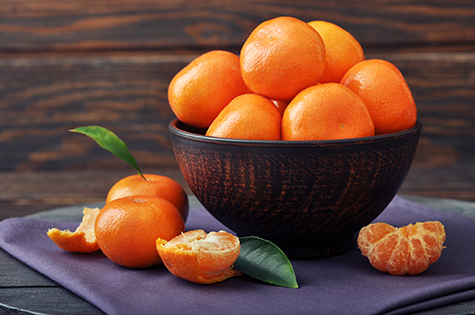 Mandarins
Mandarins
This is an increasingly popular category of citrus and it’s easy to understand why. Besides having a mild, sweet flavor, and the healthful properties of other citrus, most are seedless and east to peel. Kids love Cuties and Halos because of their small size and they can peel them themselves. Newer varieties are Sumo Citrus, a homely, pebbly specimen with a ‘topknot’ that has a loose skin. The segments have thin membranes and are wonderfully sweet—like lucious sacks of juice. Sumos are only available for a few months starting in January. Another mandarin just recently introduced is called, Super Nova. According to David Karp of the Los Angeles Times, “Super Novas are bright orange, seedless and exploding with flavor. They are extremely aromatic and feature a great balance of sweetness and acidity.” Found mostly in farmers markets, but in the LA area they are also found in Super King markets and Vicente Foods in Brentwood. Karp also describes Daisy SL with, “Smooth, dark orange skin and intense flavor—like tangerine flavored candy.” Available at Santa Monica, Venice and La Cienega farmers markets, if you’re lucky enough to be nearby.
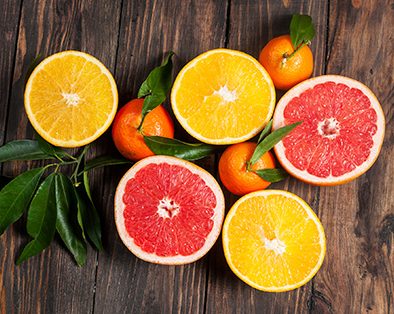 Health Benefits of Citrus
Health Benefits of Citrus
- Fight infection – Consuming a lot ofcitrus and vitamin C won’t prevent colds, but high doses of C (400 to 500 mg) may shorten colds and lessen the symptoms.
- Heart health – Citrus fruits are rich sources of flavonoids. The prevalent flavonoid in citrus of all kinds—hesperidin—is credited with boosting “good” HDL cholesterol and lowering “bad” LDL cholesterol and triglycerides.
- Boost weight loss – All citrus is naturally packed with water and fiber, which helps you feel full and satisfied. Eating a half grapefruit before meals may help you lose weight, as a study published in the Journal of Medicinal Food found.
- Reduce sodium – Lemons and limes enhance the flavor of food, so skip the salt and add a squeeze of their juice instead to minimize sodium intake.
- Prevent cancer – The special class of antioxidants in most citrus, limonoids, may help guard against colon, lung, breast and skin cancers.
Of course, I use citrus in many of the recipes from my most recent book, The Age Beautifully Cookbook.
Shrimp and Grapefruit Salad
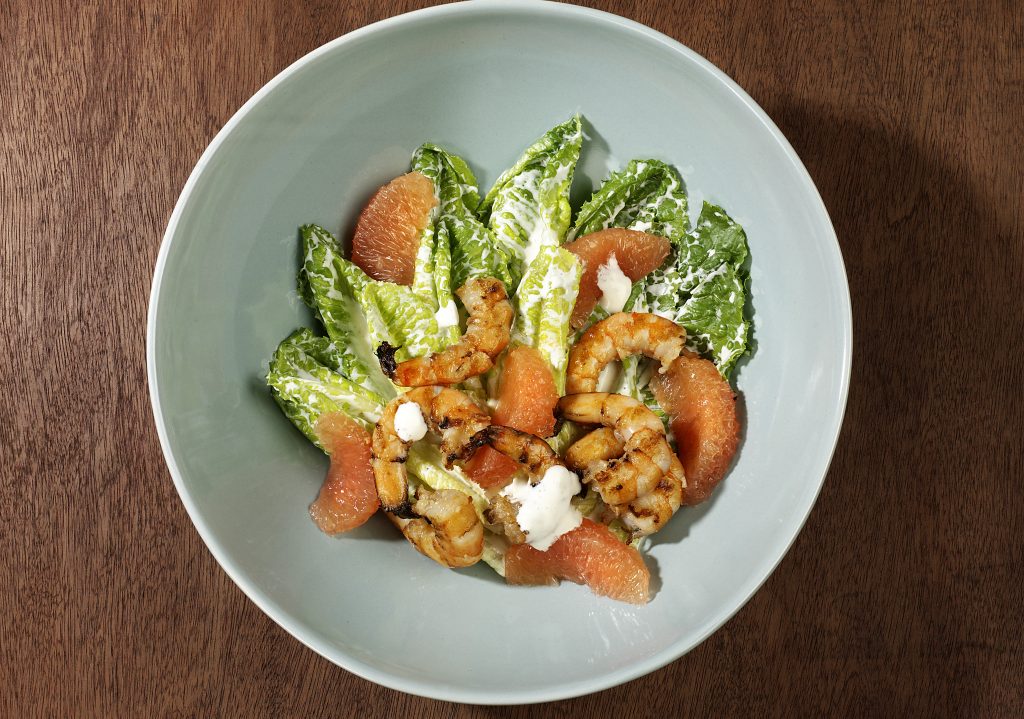
Pink grapefruit and shrimp come together nicely in this salad thanks to a rich, tangy buttermilk dressing. You can use white grapefruit, but you will lose some of the health benefits of pink grapefruit.
Pink grapefruit is full of healthful compounds—anthocyanins, flavanoids, lycopene, polyphenols, quercetin, sulfur compounds, and vitamin C—that provide loads of antioxidant power for promoting artery and heart health and protecting against sun damage and skin aging. The shrimp offer heart-healthy Omega-3s and selenium and zinc, both of which help maintain a robust immune system.
Serves 4
Ingredients
1 lb. tiger shrimp
1 Tbs. grapeseed oil
½ tsp. crushed garlic
4 cups whole Romaine lettuce leaves
1½ cups pink grapefruit segments
Dressing
1 cup whipped low fat or light cream cheese
¾ cup buttermilk
2 Tbs. flaxseed oil
⅓ cup sweet pickle relish, drained
¼ tsp. black pepper
¼ tsp. salt or salt substitute
Procedure
- Peel and devein the shrimp. Toss with the oil and garlic.
- Grill or boil the shrimp for 2–3 minutes per side or until it turns opaque. Remove from the grill or pan and allow to cool.
- Make the salad dressing: In a food processor, blend the dressing ingredients until smooth.
- Toss the Romaine lettuce in about 1 cup of the dressing. Divide among 4 plates.
- Top the lettuce with the shrimp and grapefruit segments. Serve with the remaining dressing on the side.
Citrusy Asparagus
This citrusy side dish can be served hot or cold. Asparagus has lycopene and vitamin C. Lycopene is an antioxidant that lowers cancer risk, aids cognitive function, and promotes prostate health. Vitamin C helps the body resist infection, prevent cataracts, and regenerate tissue.
Serves 4–6
Ingredients
2 lbs. asparagus spears, ends snapped off
4 Tbs. olive oil
4 Tbs. orange juice
1 Tbs. fresh lemon juice
½ tsp. sea salt or salt substitute
1 tsp. minced garlic
1 tsp. grated ginger
Procedure
- Blanch the asparagus in a large pot of boiling water for 5–7 minutes or until tender. Drain and plunge into an ice bath. Pat dry with a paper towel.
- If serving cold: Wrap the asparagus spears in a towel to retain moisture and chill for up to 4 hours in the refrigerator. Whisk the remaining ingredients together in a small bowl and toss with the asparagus spears.
- If serving warm: Whisk the orange juice, lemon juice and salt and toss with the asparagus. Saute the garlic and ginger in the oil over medium heat for 3 minutes. Add the spears and sauté for 2-3 more minutes or until the asparagus is heated through. Season with salt and serve.
Chef’s Note: You can start this recipe a day or so ahead of time. After blanching the asparagus, wrap them in a paper towel to retain moisture and refrigerate until you are ready to complete the recipe.
